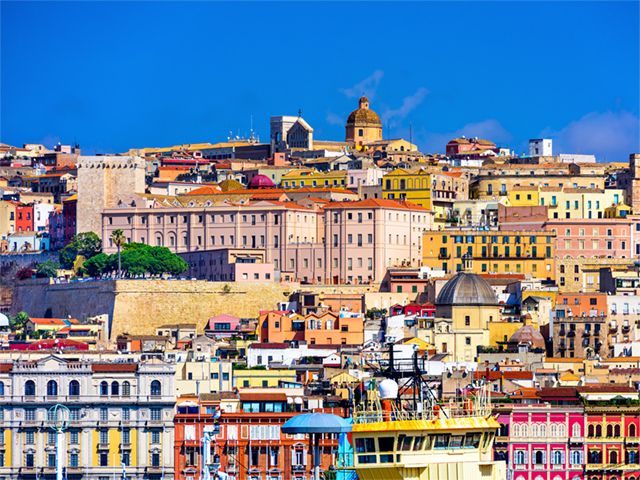Olbia and surroundings: 10 Things to See and Do
Not only beaches, but also archaeological sites and beautiful churches: discover our Top 10 things to see in Olbia and surroundings.Olbia is known for its beaches, but maybe not everyone knows the wonders of this city, which is one of the most popular destinations from the port of Civitavecchia.
From archaeological sites to beautiful churches, here are 10 things to see in Olbia and surroundings.
SEE ALL GUIDED TOURS IN OLBIA
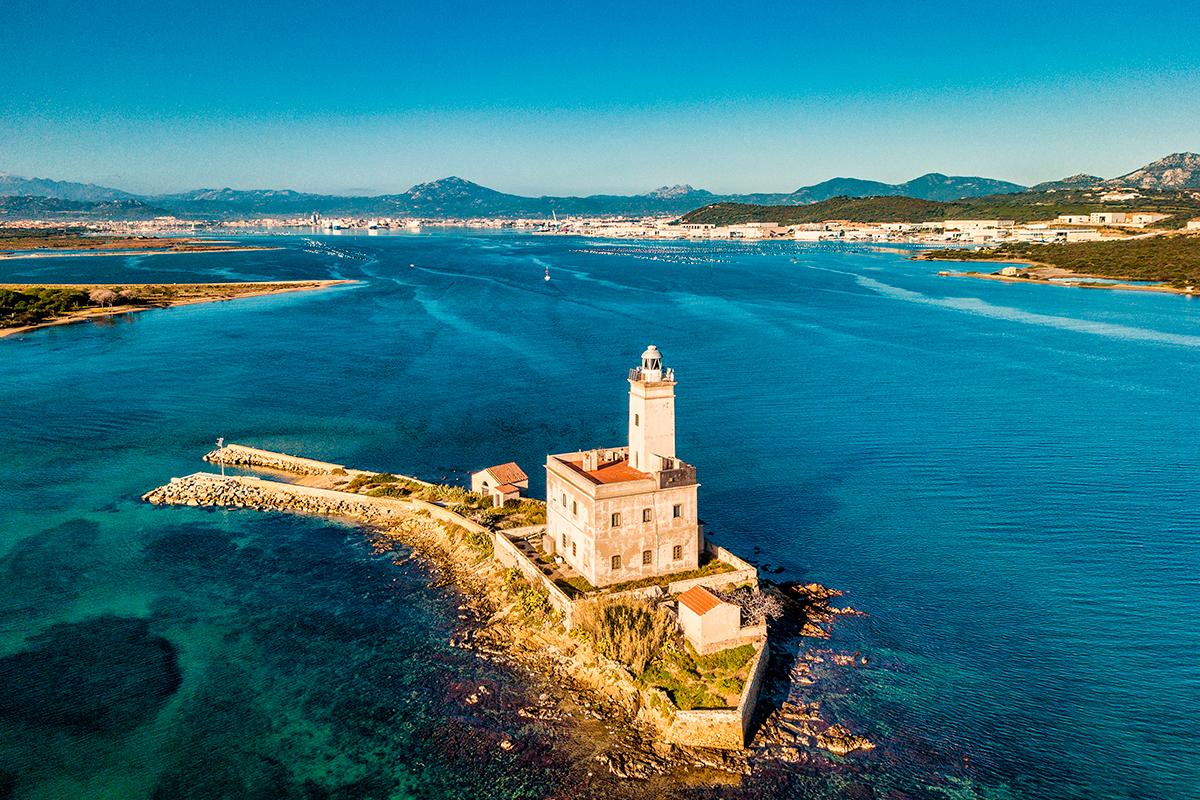
A beautiful photo of the lighthouse in Olbia
1. Punic Walls
In the centre of Olbia, between Via Acquedotto and Via Torino, you can admire the remains of ancient Punic walls from which you can glimpse one of the ancient access gates to the city.
2. Archaeological Museum Of Olbia
Not far from the historic centre and the port of Isola Bianca there is the Archaeological Museum of Olbia, one of the few museums that houses the remains of important ancient ships. It is also the only museum in the world with masts and ship wheels from the Roman period.
The museum is located in the Isola Peddone. The shape of the building resembles that of a ship. The museum tells the history of the Sardinian city, focusing on the Phoenician, Greek, Punic and Roman periods.
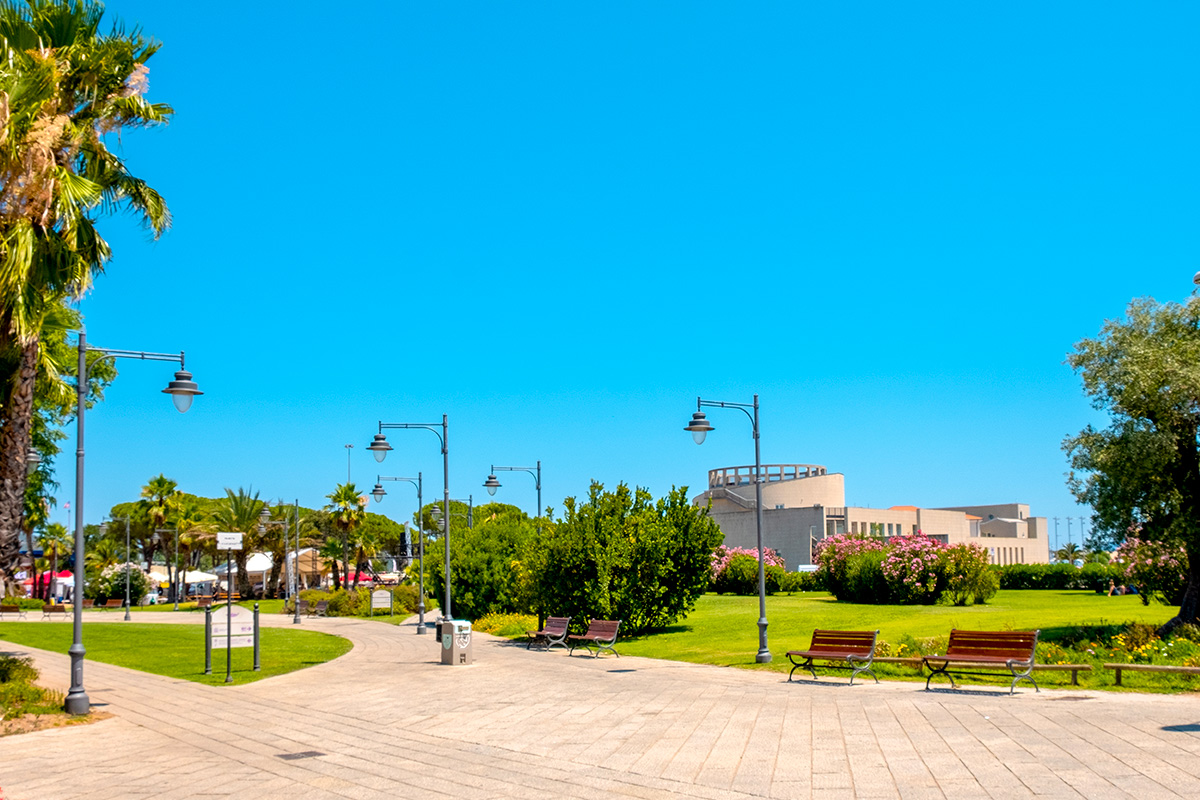
Archaeological Museum of Olbia
3. Roman Aqueduct and Cistern
In the industrial area of Olbia, in the locality of Sa Rughittula, you can admire some remains of the Roman aqueduct that was built between the 1st and 2nd centuries AD.
Its main function was that of transporting water from Monte Cabu Abbas to the town centre. Today it is the best preserved aqueduct in the whole of Sardinia.
Not far away, on the other side of Via Mincio, you can also admire a Roman cistern composed of several rooms with barrel vaults and ventilation openings.
BOOK YOUR ARCHAEOLOGICAL TOUR IN A TUK-TUK
4. Sacred Well of Sa Testa
Olbia is rich in remains of the Nuragic period. Among them, the Sacred Well of Sa Testa is worth a visit. To get there, you have to take the SP 82 road that connects the town of Olbia with Pittulongu, after crossing a small road.
This well is characterised by the geometric construction typical of the sacred wells of the Nuragic period. There is a staircase between two walls of perfectly square blocks which, when joined together, form a conical roof. It is not possible to enter the well and visit the inside.

The Sacred Well of Sa Testa
5. The Nuraghe Riu Mulinu at Cabu Abbas
The Nuraghe Riu Mulinu, which dates to 1300-1200 BC, consists of a central tower surrounded by large walls with two entrances. Due to its strategic position, it probably played an important role in the defence of the city.
Its function as a place of worship is not excluded either: in fact, there is a pit where have been found fragments of burnt bones and several ceramic artefacts.
What is certain is that this is a stop not to be missed and from where you can enjoy a breathtaking view!

The Nuraghe Riu Mulinu at Cabu Abbas
6. Pedres Castle
Among the most interesting excursions there are the ruins of this ancient castle.
Perched on a small hill, you have to walk a short distance among the rocks to get there.
Once there, you can admire not only a beautiful view of the plain of Olbia, but also the Pedres Castle, consisting of a wall, a tower and a rectangular building that probably served as a dwelling.
The castle dates back to the time of the Court of Gallura and the Pisan-Aragonese domination during the rise of the Visconti family (1296 - 1322).
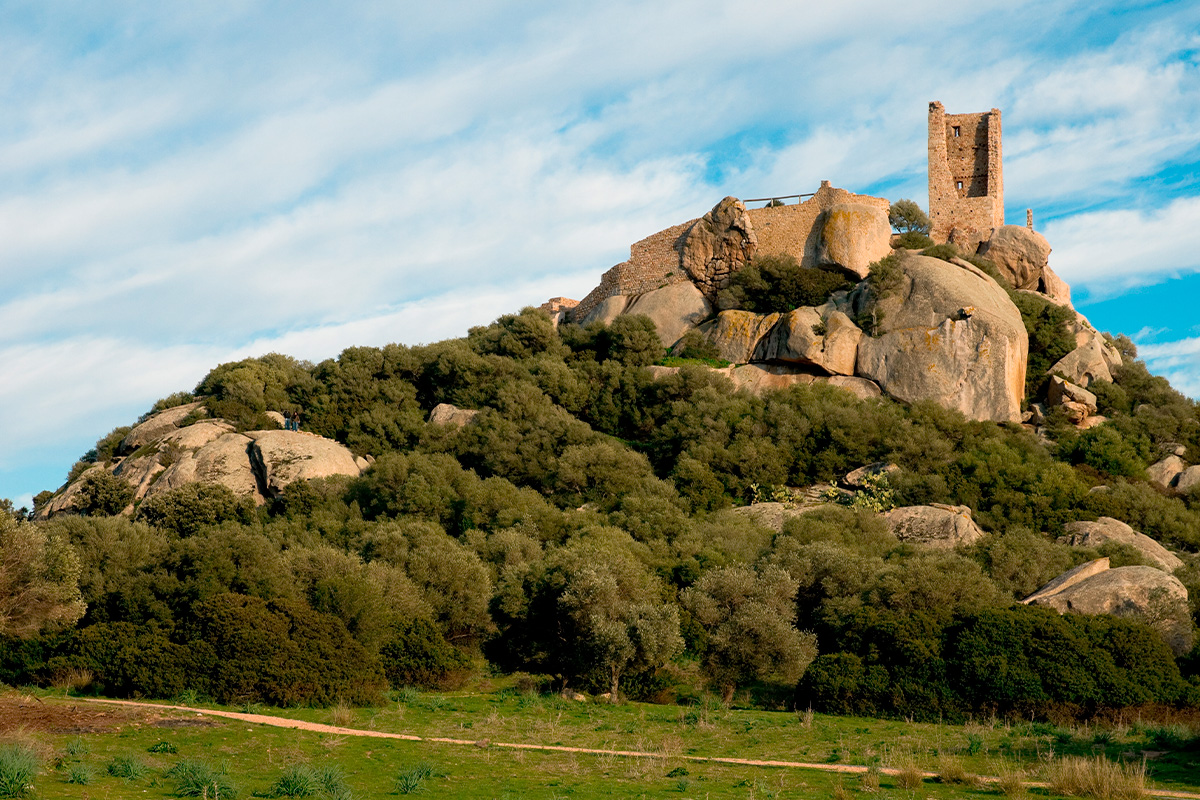
The Pedres Castle in Olbia
7. Giants'Grave of Su Mont’e S’Abe
Not far from Pedres Castle is the famous Giants'Grave, a funerary monument from the Nuragic period. Like other funerary constructions of the period, it has a longitudinal structure covered by horizontal slabs and an exedra made up of vertical slabs.
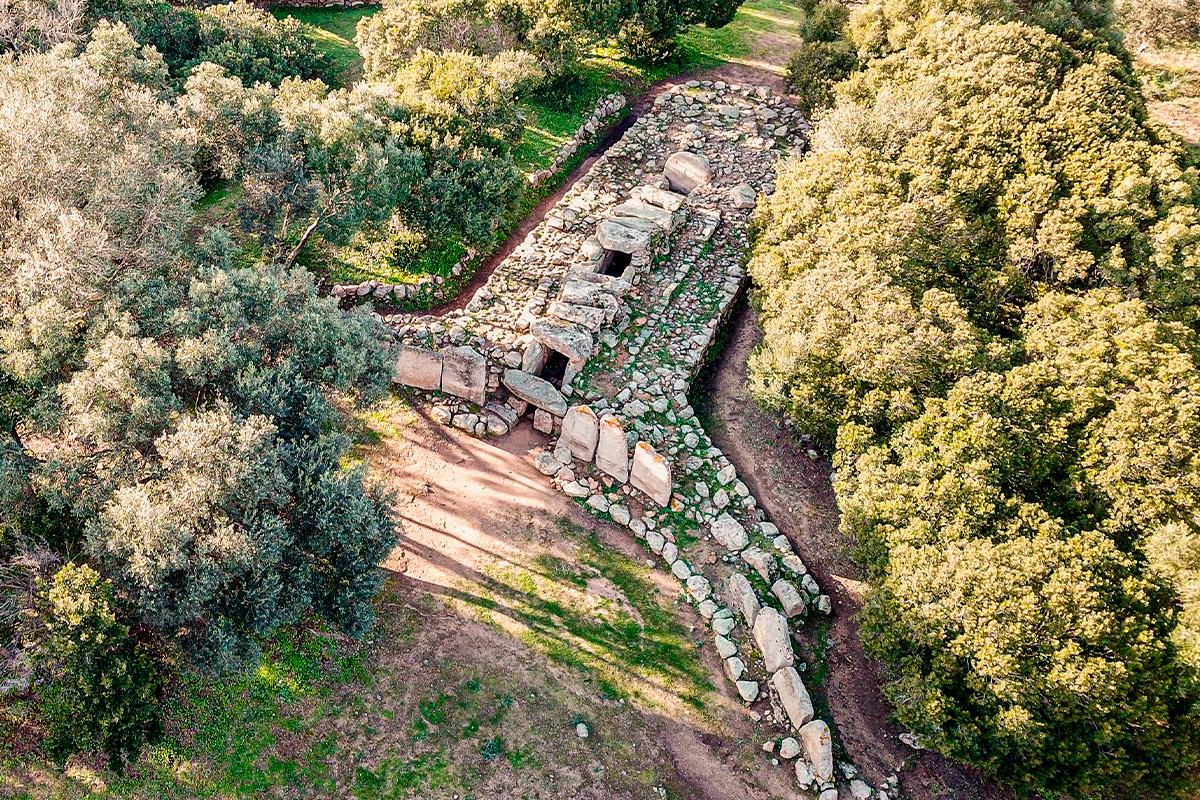
Giants'Grave - Olbia
8. The Church of San Paolo
The church of San Paolo is a very special place. Located in the old town of Olbia, it consists of a rectangular base and three chapels forming a cross.
It was built from the ruins of a Roman temple dedicated to Hercules in the late Middle Ages. It was later restored and adapted to the Baroque style in the mid-18th century.
Without any doubt, its most distinctive feature is the marvellous polychrome majolica dome, built around 1939.
Inside you can admire the frescoes by the painter Alberto Sanna, including the "Resurrection and the musicians angels" in the apse; the "Via Crucis" on the side walls; the "Sacraments" in the lower part of the dome.
Other elements that deserve special mention are the high altar and the polychrome marble balustrade, the choir and the wooden pulpit in Venetian style, two wooden statues from the 18th century (dedicated to the Sacred Heart and to St. Francis).
Visitors can also see the silver objects in the sacristy, including a 17th century halo and the sandals of the Assumption.
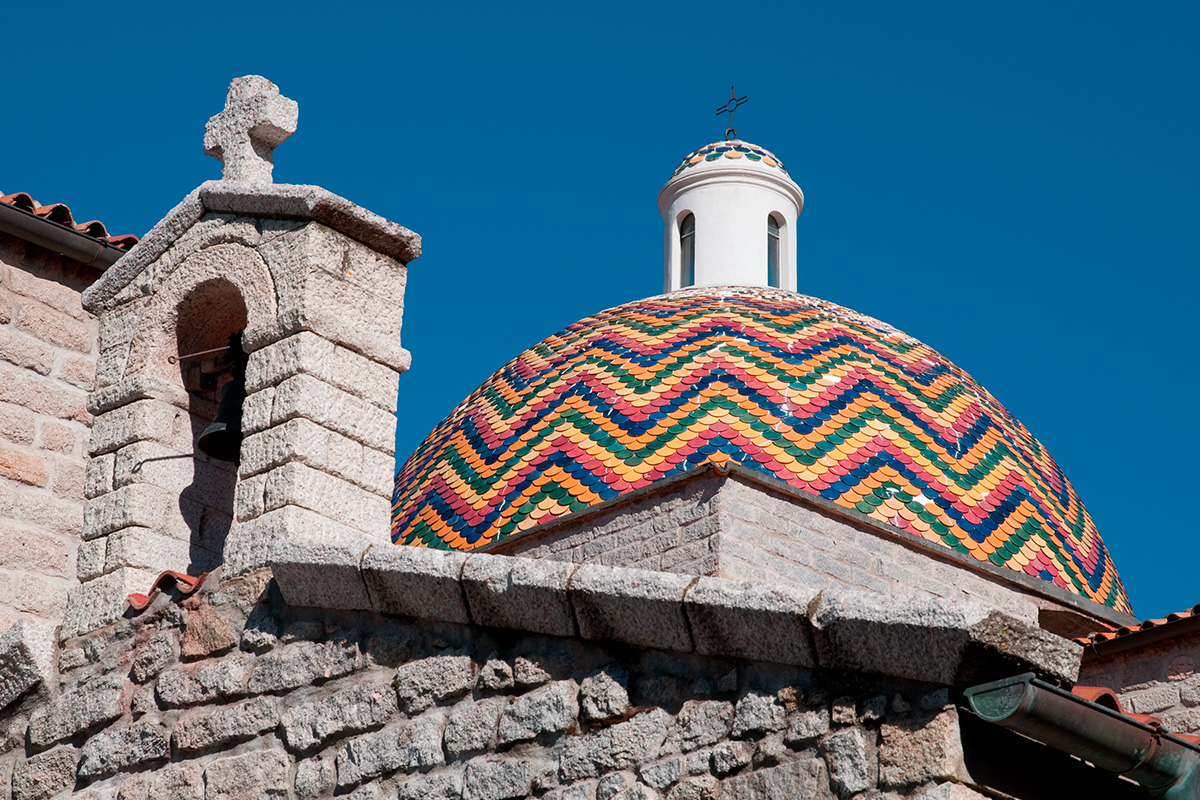
The beautiful dome of the Church of San Paolo
9. The Basilica of San Simplicio
The Basilica of San Simplicio is one of the few examples of Romanesque architecture in Sardinia. It is a must-see.
The church houses the relics of San Simplicio, martyred bishop and patron saint of the town and of Gallura. The patron's saint celebrations last for a whole week and end on May 15th, with the procession of the saint through the streets of the town.
The Basilica was built in the Middle Ages, when Olbia, then Civita, was an important administrative centre of the Court of Gallura. It is the place in which the marriage between Lamberto Visconti and Elena of Gallura, the first Sardinian woman to play the role of reigning judge, was celebrated.
We suggest you take a look at the architectural details, such as the precious capitals and the traces of red crosses painted on the pillars. These crosses represent one of the rare examples of ancient wall decorations.
Another interesting element is the "hand of God" holding the pedestal of an arch, representing God's help in the construction of the church.
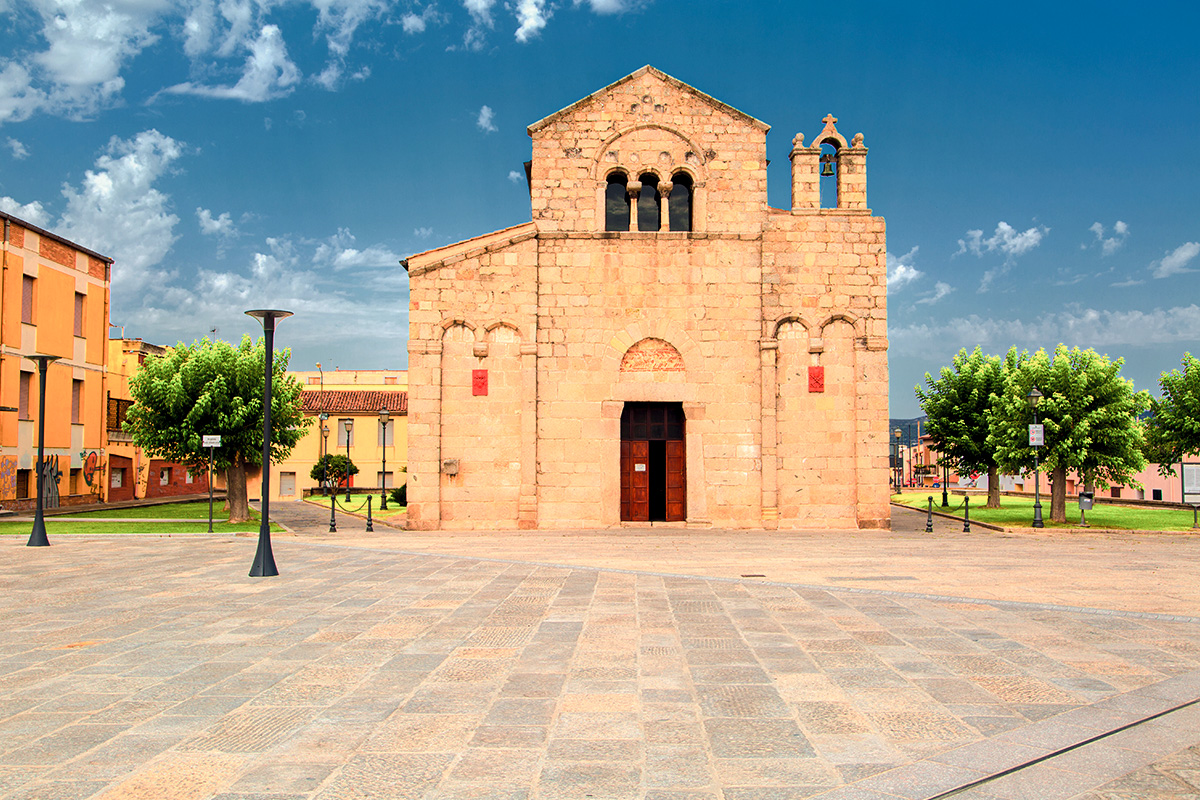
The Basilica of San Simplicio in Olbia
10. The beaches of Olbia and surroundings
The beaches of Olbia and surroundings are a natural paradise, perfect for those who love the sea and crystalline water.
You will be spoilt for choice: from the beaches in the south of Olbia and the Tavolara island to the wonderful Golfo Aranci. All these places can be easily reached from the town.
If you are looking for a unique experience and want to visit some coves with beautiful waters, we recommend these excursions:
PRIVATE EXCURSION TOUR TO CALA LUNA WITH APERITIF AT SUNSET
FULL DAY EXCURSION TO THE ARCHIPELAGO OF LA MADDALENA

The wonderful Tavolara island
Near Olbia: Dorgoli Park Museum
As an alternative to the wonderful beaches, we recommend the S'Abba Frisca Park Museum in Dorgoli, not far from Olbia.
It is an enchanted place, with fountains, small lakes and impressive waterfalls fed by a karst spring. All surrounded by tall white poplars, holm oaks and citrus groves. A true paradise!
The park is located only two kilometres away from the Gulf of Orosei and is considered one of the most beautiful seaside places in the world.
BOOK YOUR GUIDED TOUR WITH APERITIF INCLUDED



 PORT MOBILITY CIVITAVECCHIA
PORT MOBILITY CIVITAVECCHIA








